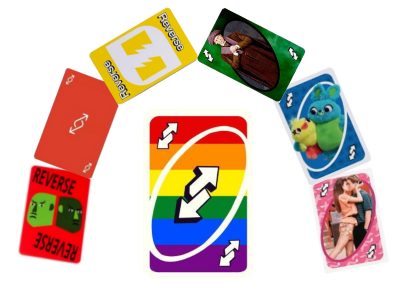
The colours of UNO are symbolic of its minimalist nature, in which each colour plays an important role in deciding the flow of the game. These colours are: red, blue, green, and yellow. Players can also interfere with the flow of the game for the other players by strategically stacking two cards of different colours on top of each other, demonstrating that the organisation of cards within the deck is also essential. Along with this, the vibrant colours of UNO help to ensure fast gameplay, since players can rely on visual cues to make fast and strategic decisions. The vibrancy of the colours also helps to make the game very accessible to all age groups across the world.
Additionally, on a psychological scale, the colours of UNO may affect the social interactions between players, so that when a red or blue card is played, there is a higher likelihood of “choosing sides”. This was reflected in Mattel’s 2019 release of ‘Non-partisan UNO’, which does not contain red or blue coloured cards as they represent the democratic and republican parties in the USA. Thus, the different colours psychologically evoke different feelings within the players. For instance, red cards may symbolise urgency or conflict, whereas green cards may signify excitement. The different colours may therefore convey a sense of unpredictability or power throughout the game.

While the colours of UNO are commonly universal, they change for certain editions to make the game more immersive and linked to specific holidays, themes, or popular culture. With the big number in the middle or top left/bottom right of the card and the colour on the outside corners or in the middle of the card; it is the design of the cards themselves that makes UNO universally recognisable.
